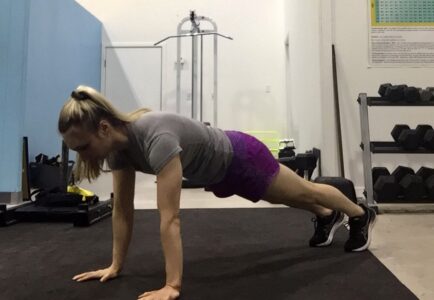
Bodyweight training refers to a training style in which you perform exercises solely with your own bodyweight without any additional equipment or machines. Bodyweight training has a ton of benefits, especially compared to traditional resistance training. Traditional resistance training refers to any resistance training program that uses a variety of fitness tools, including barbells, dumbbells, kettlebells, machines and resistance bands. In this article, we will compare these two types of training.
Versatility
Compared to traditional resistance training, bodyweight training is much more versatile. You can perform bodyweight exercises in your bedroom or hotel room or even outside at a park. In contrast, traditional resistance training, powerlifting, weightlifting or kettlebell training all require some dedicated equipment. In contrast, bodyweight training doesn’t require any equipment, making it extremely versatile.
Cost
Bodyweight training is also much cheaper than traditional resistance training because it does not require any equipment. However, if you choose to invest in pull up bars, paralletes or other gadgets to enhance your bodyweight training program, you may end up spending just as much as it would to purchase home weights or a gym membership for a more traditional strength training program.
Training Scalability
While many people believe bodyweight training is more beginner friendly than traditional strength training, the opposite is actually true. Many bodyweight exercises require a prerequisite level of strength or motor control to perform correctly. For example, push ups or pull ups require a lot of strength to perform. Beginners can more easily complete bench presses with a small portion of their bodyweight (say, 5-10 pounds per hand) or rows with light weights to build their strength.
Training Progression
It’s also easier to make and track your progress with traditional strength training than with body weight training. You can easily add 5 pounds to your barbell squats and note your progress. However, it is more difficult to progress from bodyweight squats to pistol squats–and to quantify your progress. Traditional strength training allows you to quantify your progress by calculating your total load and volume load.
Creating a Full Body Training Program
Finally, it’s much easier to create a well rounded strength training program with traditional strength exercises than with bodyweight exercises alone. While bodyweight pull ups, squats, push ups and planks can help you train your larger muscle groups, it’s difficult to isolate your smaller muscle groups with bodyweight exercises alone. That’s where smaller joint exercises like rear delt flies with light weights, quad extensions and bicep curls can come into the mix.
Final Thoughts
Bodyweight exercises provide a ton of benefits including strength, body awareness, low cost and versatility. However, traditional strength training exercises are easier to scale and progress, allowing you to track your progress more easily and build higher levels of overall strength. For best results, consider incorporating both bodyweight exercises and traditional resistance training into your exercise routine.
Need help creating a training program that properly incorporates both types of exercises for best results? Why not visit my personal training or online training pages to learn more.